Subcellular trafficking of the TRH receptor: effect of phosphorylation
- PMID: 19541745
- PMCID: PMC2737562
- DOI: 10.1210/me.2009-0119
Subcellular trafficking of the TRH receptor: effect of phosphorylation
Abstract
Activation of the G protein-coupled TRH receptor leads to its phosphorylation and internalization. These studies addressed the fundamental question of whether phosphorylation regulates receptor trafficking or endosomal localization regulates the phosphorylation state of the receptor. Trafficking of phosphorylated and dephosphorylated TRH receptors was characterized using phosphosite-specific antibody after labeling surface receptors with antibody to an extracellular epitope tag. Rab5 and phosphoreceptor did not colocalize at the plasma membrane immediately after TRH addition but overlapped extensively by 15 min. Dominant-negative Rab5-S34N inhibited receptor internalization. Later, phosphoreceptor was in endosomes containing Rab5 and Rab4. Dephosphorylated receptor colocalized with Rab4 but not with Rab5. Dominant-negative Rab4, -5, or -11 did not affect receptor phosphorylation or dephosphorylation, showing that phosphorylation determines localization in Rab4(+)/Rab5(-) vesicles and not vice versa. No receptor colocalized with Rab7; a small amount of phosphoreceptor colocalized with Rab11. To characterize recycling, surface receptors were tagged with antibody, or surface receptors containing an N-terminal biotin ligase acceptor sequence were labeled with biotin. Most recycling receptors did not return to the plasma membrane for more than 2 h after TRH was removed, whereas the total cell surface receptor density was largely restored in less than 1 h, indicating that recruited receptors contribute heavily to early repopulation of the plasma membrane.
Figures

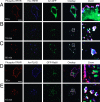
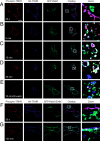

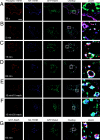
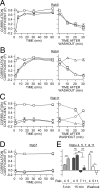
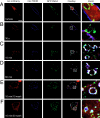
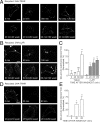
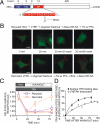


Similar articles
-
Desensitization, trafficking, and resensitization of the pituitary thyrotropin-releasing hormone receptor.Front Neurosci. 2012 Dec 13;6:180. doi: 10.3389/fnins.2012.00180. eCollection 2012. Front Neurosci. 2012. PMID: 23248581 Free PMC article.
-
Phosphorylation state of mu-opioid receptor determines the alternative recycling of receptor via Rab4 or Rab11 pathway.Mol Endocrinol. 2008 Aug;22(8):1881-92. doi: 10.1210/me.2007-0496. Epub 2008 Jun 11. Mol Endocrinol. 2008. PMID: 18550774 Free PMC article.
-
beta 2-adrenergic receptor internalization, endosomal sorting, and plasma membrane recycling are regulated by rab GTPases.J Biol Chem. 2000 Sep 1;275(35):27221-8. doi: 10.1074/jbc.M003657200. J Biol Chem. 2000. PMID: 10854436
-
Regulation of G-protein-coupled receptor activity by rab GTPases.Recept Channels. 2002;8(2):87-97. Recept Channels. 2002. PMID: 12448790 Review.
-
Regulation of membrane transport through the endocytic pathway by rabGTPases.Mol Membr Biol. 1999 Jan-Mar;16(1):81-7. doi: 10.1080/096876899294797. Mol Membr Biol. 1999. PMID: 10332741 Review.
Cited by
-
Desensitization, trafficking, and resensitization of the pituitary thyrotropin-releasing hormone receptor.Front Neurosci. 2012 Dec 13;6:180. doi: 10.3389/fnins.2012.00180. eCollection 2012. Front Neurosci. 2012. PMID: 23248581 Free PMC article.
-
Biochemical and physiological insights into TRH receptor-mediated signaling.Front Cell Dev Biol. 2022 Sep 6;10:981452. doi: 10.3389/fcell.2022.981452. eCollection 2022. Front Cell Dev Biol. 2022. PMID: 36147745 Free PMC article. Review.
References
-
- Jones BW, Song GJ, Greuber EK, Hinkle PM 2007 Phosphorylation of the endogenous thyrotropin-releasing hormone receptor in pituitary GH3 cells and pituitary tissue revealed by phosphosite-specific antibodies. J Biol Chem 282:12893–12906 - PubMed
-
- Groarke DA, Wilson S, Krasel C, Milligan G 1999 Visualization of agonist-induced association and trafficking of green fluorescent protein-tagged forms of both β-arrestin-1 and the thyrotropin-releasing hormone receptor-1. J Biol Chem 274:23263–23269 - PubMed
-
- Vrecl M, Anderson L, Hanyaloglu A, McGregor AM, Groarke AD, Milligan G, Taylor PL, Eidne KA 1998 Agonist-induced endocytosis and recycling of the gonadotropin-releasing hormone receptor: effect of β-arrestin on internalization kinetics. Mol Endocrinol 12:1818–1829 - PubMed
-
- Yu R, Hinkle PM 1998 Signal transduction, desensitization, and recovery of responses to thyrotropin-releasing hormone after inhibition of receptor internalization. Mol Endocrinol 12:737–749 - PubMed
-
- Moore CA, Milano SK, Benovic JL 2007 Regulation of receptor trafficking by GRKs and arrestins. Annu Rev Physiol 69:451–482 - PubMed

